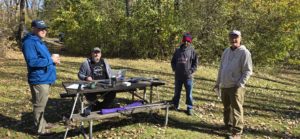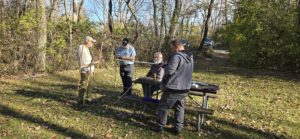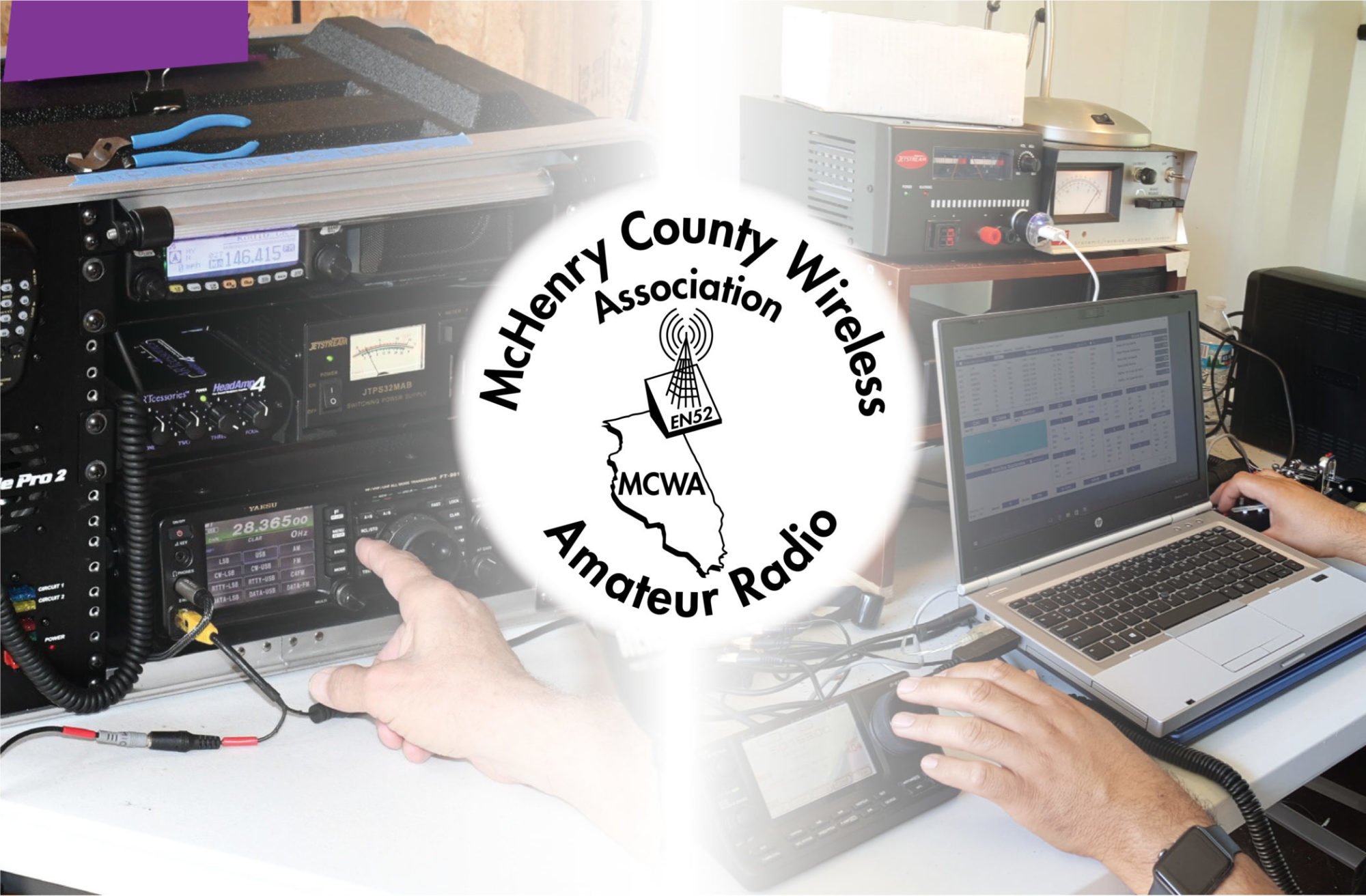It was a lovely sunny Sunday morning for our inaugural fox hunt. The allure of freshly brewed coffee and fresh donuts was irresistible. Glenn (K9OK) and Angelo (KD9QVW) organized the event, which was held at the Hollows in Crystal Lake adjacent to the Algonquin Highway Department where the club meets.
People began gathering at ten, readying their equipment while Glenn, Angelo, and Wendell (N9REP) prepared and hid the two fox transmitters on the trails. With the transmitters hidden, the game was afoot and the hunters were off in search of their quarry. Along the way, we encountered others on the trail that were curious about what we were doing waving around these strange devices, which provided an opportunity to share about our hobby. One visitor remarked that is was like geo-caching and looked like fun.
After the foxes were located, the hunters returned to the picnic area to compare notes and enjoy some more coffee and donuts before heading out to enjoy the rest of the day.
It was interesting to see the various types of antennas and receivers that the hunters used to track down the foxes. Lyle (W9LRG) and Ralph (WB9ICF) brought their homebrewed 3-element tape measure Yagis, John (K9JK) a 3-element commercial Yagi, Glenn (K9OK) and Angelo (KD9QVW) brought their Arrow satellite antennas, and Roger (KF9D) brought both a UHF folded dipole (for close in work) AND a homebrew TDOA (Time Difference of Arrival) antenna that he built many years ago as an Elgin radio club project. Several hunters used the VK3YNG receivers that were part of a MCWA group buy several years ago, while others used handhelds with either a step attenuator, a 4 MHz offset attenuator, or tuning to the third harmonic of the fox transmit frequency.
All of these combinations worked well in the walking fox hunt with each setup having specific strengths. For example, the TDOA antenna works very well regardless of signal strength, thus not requiring an attenuator, while the VK3YNG receivers have auto switching attenuators to reduce the sensitivity of the receiver as the hunter gets closer to the fox.
I was interesting to see how multipath caused by reflections from buildings, cars, and foliage made the hunt more challenging. For example, as Ralph was tracking down one of the foxes, the signal level suddenly increased significantly when John opened the door of the restroom at the pavilion. This gave the impression that we were close to the fox, but it turned out that the door was acting as a reflector and the fox was actually several hundred feet from the location where we were searching.
A few people who had planned on attending and had assembled fox hunting setups weren’t able to attend the Sunday event, but we hope they will join us next time.
All and in all, it was a fun experience and we agreed that we should do this again. Because this is an activity that has similar elements to geo-caching and that hunters don’t need to be licensed radio amateurs, this would be a great family event and one that can be enjoyed by non-amateurs as well.
A big thank you to Glenn and Angelo for organizing this fun event and to MCWA for covering the pavilion fee and coffee and donuts.
The following people were at the hunt: Glenn (K9OK), Angelo (KD9QVW), John (K9JK), Lyle (W9LRG), Ralph (WB9ICF), Wendell (N9REP), Roger (KF9D), David (K9AT), and Sam (KC9GPY).
 David (K9AT) enjoys a cup of coffee while Glenn (K9OK) programs the fox transmitters and Angelo (KD9QVW) and Roger (KF9D) look on.
David (K9AT) enjoys a cup of coffee while Glenn (K9OK) programs the fox transmitters and Angelo (KD9QVW) and Roger (KF9D) look on.
 Roger (KF9D) is holding his TDOA antenna as Wendell (N9REP) signs in. John (K9JK) and Glenn (K9OK) readying their equipment for the hunt.
Roger (KF9D) is holding his TDOA antenna as Wendell (N9REP) signs in. John (K9JK) and Glenn (K9OK) readying their equipment for the hunt.
 Some of the highly skilled hunters zeroing in on their quarry with Wendell pointing to the actual location of the fox.
Some of the highly skilled hunters zeroing in on their quarry with Wendell pointing to the actual location of the fox.
 Even when you are right on top of the fox, it can be hard to find. The location of this transmitter was at the base of a tree and can just be seen (it’s the blue colored object). As this was the first hunt for many of us, the people placing the transmitters were taking it easy on the hunters and not hiding the transmitters in hard to find locations.
Even when you are right on top of the fox, it can be hard to find. The location of this transmitter was at the base of a tree and can just be seen (it’s the blue colored object). As this was the first hunt for many of us, the people placing the transmitters were taking it easy on the hunters and not hiding the transmitters in hard to find locations.
